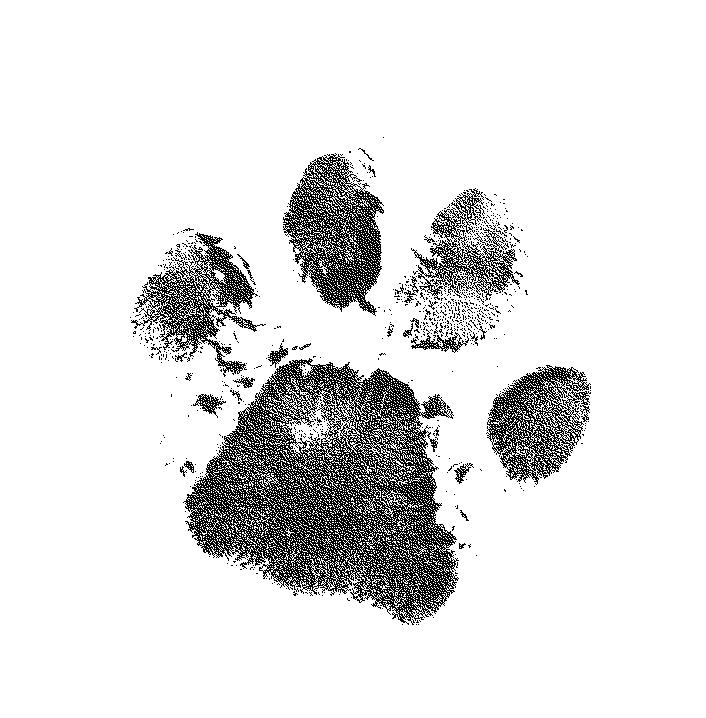In the realm of feline curiosities, cat pawprints stand out as captivating imprints of our beloved companions’ presence. These tiny, intricate designs not only serve as adorable reminders of their playful antics but also hold secrets about their health, behavior, and even their unique personalities. Join us as we delve into the enchanting world of cat pawprints, exploring their significance and unraveling the mysteries they hold.
The Anatomy of a Cat Pawprint

In the realm of feline curiosities, cat pawprints stand out as captivating imprints of our beloved companions’ presence. These tiny, intricate designs not only serve as adorable reminders of their playful antics but also hold secrets about their health, behavior, and even their unique personalities. Join us as we delve into the enchanting world of cat pawprints, exploring their significance and unraveling the mysteries they hold.
Each of these pads plays a crucial role in providing cats with stability, grip, and cushioning. The central pad acts as a shock absorber, while the digital pads enhance traction and control during movement. The interdigital pads assist in gripping surfaces, and the carpal pad provides support for the wrist.

Pawprints as Indicators of Health
Examining a cat’s pawprints can offer valuable insights into their overall well-being. Healthy pawprints typically exhibit the following characteristics:
- Firm and Supple: Pads should be firm to the touch but not excessively hard or soft.
- Images Of What Pawed Cat SVG Pawed Cat SVG: A Symbol Of Feline Grace And Agility
- Bear Paw SVG File Bear Paw SVG: Unleashing The Spirit Of The Wild
- Dog Paw Print Free The Enduring Symbolism Of Dog Paw Prints: An Exploration Of Meaning, History, And Cultural Significance
- Bear Paw Print SVG Free Bear Paw Print SVG: Unleash The Power Of Wildlife Symbolism In Your Designs
- Free SVG Cat Paw Print Free SVG Cat Paw Print: A Comprehensive Guide To Feline Cutouts
- The Central Pad: The largest and most prominent pad located in the center of the paw.
- The Digital Pads: Four smaller pads situated at the base of each toe.
- Pink or Black: The color of the pads should be a healthy pink or black.
- Smooth and Free of Cracks: The surface of the pads should be smooth and free of any cracks or fissures.
- No Discharge or Odor: The pads should be clean and free of any discharge or unpleasant odor.
- Kneading: When cats knead with their paws, they are expressing contentment and affection.
- Scratching: Cats scratch to mark their territory, sharpen their claws, and relieve stress.
- Hiding Pawprints: Cats may hide their pawprints in sand or dirt to conceal their presence from predators.
- Pawing at Objects: Cats may paw at objects to attract attention, ask for food, or initiate play.
- Ink Pawprints: Dip your cat’s paw into non-toxic ink and gently press it onto paper or a canvas.
- Clay Pawprints: Roll out a piece of clay and gently press your cat’s paw into it. Bake the clay according to the manufacturer’s instructions.
- Salt Dough Pawprints: Mix flour, salt, and water to create salt dough. Roll out the dough and press your cat’s paw into it. Bake the salt dough until it hardens.
The Anatomy of a Cat Pawprint
A cat’s pawprint consists of four distinct sections:

Any deviations from these characteristics could indicate an underlying health issue, such as allergies, infections, or injuries. If you notice any abnormalities in your cat’s pawprints, consult with a veterinarian for further evaluation.
Pawprints as Behavioral Clues

Cat pawprints can also provide clues about a feline’s behavior and temperament. For instance:
By observing your cat’s pawprint patterns, you can gain a deeper understanding of their emotional state and motivations.
Pawprints as Unique Identifiers
Just like human fingerprints, cat pawprints are unique to each individual. No two cats have identical pawprints, making them valuable for identification purposes. This feature is especially useful in situations where cats become lost or need to be identified in legal cases.
Preserving Pawprints as Keepsakes
Many cat owners cherish their feline companions’ pawprints as precious keepsakes. Here are some ways to preserve these adorable imprints:
These preserved pawprints serve as timeless reminders of the special bond you share with your beloved feline friend.
Frequently Asked Questions (FAQs)
Q: Why do cats have pawprints?
A: Pawprints provide cats with stability, grip, and cushioning. They also help cats grip surfaces, mark their territory, and communicate with other cats.
Q: How can I tell if my cat’s pawprints are healthy?
A: Healthy pawprints should be firm and supple, pink or black, smooth and free of cracks, and free of discharge or odor.
Q: What does it mean when my cat kneads with its paws?
A: Kneading is a sign of contentment and affection in cats. It is often associated with nursing behavior.
Q: Why do cats scratch their pawprints in sand or dirt?
A: Cats may hide their pawprints in sand or dirt to conceal their presence from predators.
Q: Can cat pawprints be used to identify individual cats?
A: Yes, cat pawprints are unique to each individual, making them valuable for identification purposes.
Conclusion
Cat pawprints are more than just adorable imprints; they are a window into the health, behavior, and individuality of our beloved feline companions. By understanding the significance of pawprints, we can deepen our bond with our cats and appreciate the intricate details that make them so special. Whether you choose to preserve their pawprints as keepsakes or simply marvel at their unique designs, these tiny imprints hold a treasure trove of feline charm and intrigue.
